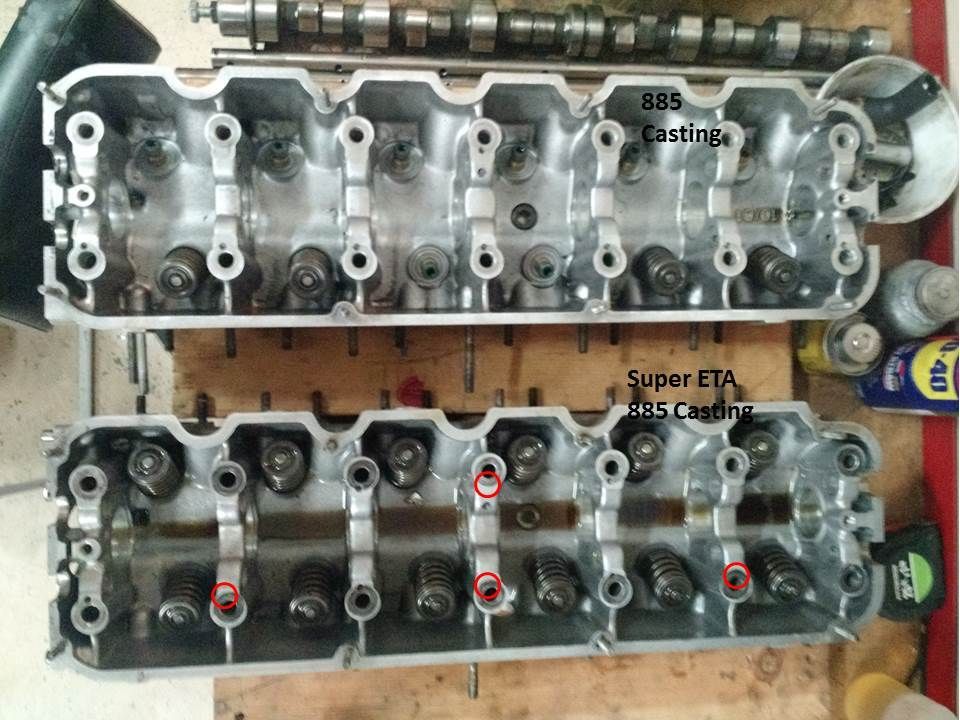Other than the Daytona race last year, I’ve been running a .020" over engine that I built while I was living in Kansas. It had 14 or so race weekends on it and dynoed at 158 WHP at Road Atlanta last summer during the event prior to the East Coast Nationals. This background is important because it’s a miracle the engine was even running…
I refreshed (complete tear down) the engine over the winter using my standard procedures with the only difference being the addition of Ireland Engineering HD Rocker Arms. When I disassembled the engine, I took note that there was virtually no wear on the pistons, bearings, cam, the piston ring gaps were unchanged, but the intake rocker arms had wear that reduced valve lift by about .030". The exhaust rocker arms had no wear and I didn’t think much of it.
At Roebling Road this weekend, the engine was very strong for the Lightning race. All morning long though, I kept thinking the valve train didn’t sound right and acknowledged to myself that I would re-check valve lash prior to the next race. In my experience, valve lash does not change during the engine break in process, but there are always anomalies. Anyway, I lost power during the the Thunder race and pulled into the pits.
After I pulled the valve cover, I found significant rocker arm wear and complete failure on one rocker arm foot. However, this isn’t a defective part issue and the Ireland HD Rocker Arms are in fact reliable pieces; I just had a problem with my oiling system. After replacing the rocker arms, I started the engine and found that there was no oil passing through the oil spray bar. Today in the garage, I figured out that my cylinder head is in fact an 885 cylinder head from a 1988 Super Eta and it does not have the same oiling provisions that come standard on the 325i cylinder head. By drilling four holes, you can modify the Super Eta 885 casting to work well, but I didn’t realize it was a Super Eta piece during the original build and never made the modifications. Other than the oiling holes, the head is identical to all 885 cylinder heads.
So, the funny thing about this failure is that I ran this engine, and it ran very well for 14 or so weekends without oil moving through the oil spray bar or the oil intake side rocker arm shaft. I guess BMW builds a very hard rocker arm!!!
After discussing with Andrew at Ireland Engineering, Ireland is replacing the Rocker Arms at there expense and planning to examine and improve their design as necessary. I my opinion, the pad on the Ireland piece may not be as hard as the OE piece, but Ireland’s piece is much more resistant to over rev breakage and hard enough to last with proper oiling.
Rocker arm kabob
[URL=http://s1287.photobucket.com/user/Richard_Bratton/media/2015-04-13%2019.46.30-2_zpscmtni6xz.jpg.html] [/URL]
[/URL]
Cam wear
[URL=http://s1287.photobucket.com/user/Richard_Bratton/media/2015-04-13%2018.14.26_zpsbdoisukr.jpg.html] [/URL]
[/URL]
A standard 885 casting next to my 885 Super Eta casting. The red circles mark the the locations you must drill to create the oil passageways.
[URL=http://s1287.photobucket.com/user/Richard_Bratton/media/Super%20Eta%20Cylinder%20Head_zpstyigkrl3.jpg.html] [/URL]
[/URL]



 [/URL]
[/URL] [/URL]
[/URL] [/URL]
[/URL] [/URL]
[/URL]